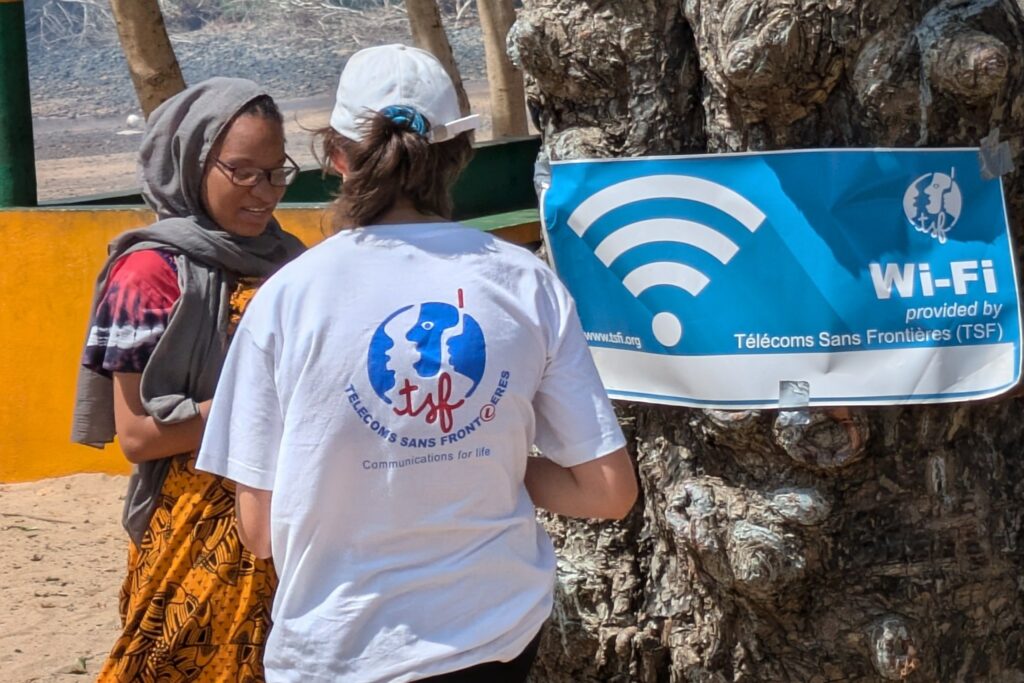
We are currently living in a time where the number of humanitarian disasters across the globe is increasing at a rate higher than ever before. In fact, the number of disasters annually is now five times the number it was fifty years ago, with a high possibility that this number will inflate to a total of 560 by 2030 – directly impacting people and the planet. For many, the reason behind this inflation is extremely clear, with ‘climate change’ being the topic of many conversations at the moment. What is worse, however, is that climate change has not only impacted the frequency of these disasters but is also worsening the impact that these disasters are having on individuals and communities globally.
As these crises continue to evolve rapidly – becoming larger, longer, more difficult and complex to access – many eyes are searching for a solution to reduce the humanitarian impact of these disasters. One thing is clear: technology will continue to play an increasingly vital role in both preventing and alleviating the suffering caused.
There are many ways that different organisations are choosing to deploy technologies as a resource for upgraded disaster response. For example, new data analysis for optimising responses, the utilisation of AI for disaster predictions and preparation, or data sharing for cross-border agency alignment. Looking further afield, at Télécoms Sans Frontières (TSF), we have seen and understood the importance of telecommunications in the face of humanitarian and environmental adversity to reconnect disparate communities and coordinate disaster response. As the first humanitarian NGO that specialises in emergency response technologies, we have managed to respond to more than 170 crises in 25 years, with 100 missions dedicated to disaster response.
When reacting to these disasters, something important to remember is that there are three key response stages, each of equal importance:
- Preparedness and resilience
- Immediate response
- Post-disaster recovery
Stage One: Preparedness and Resilience
One way in which we at TSF have used emergency response devices is to improve preparations prior to disasters through regional distribution. To improve the strength of response teams, TSF ensured proper telecom training and equipment was provided to 29 countries’ first responders teams in South-East Asia and the Caribbean, both disaster-prone regions. By providing this training and equipment, we can contribute to these teams’ efforts to recover their communications once a disaster strikes and improve our response by coordinating with the affected country’s first responders to identify needs quickly.
Stage Two: Immediate Response
Once a disaster has struck, our main priority is to meet the immediate needs of those affected. That is why, at TSF, we try our hardest to ensure our teams reach the affected areas within the first few days in order to ensure we are able to quickly connect with localised organisations. By connecting with these relief organisations, we can provide them with the connectivity needed for their operations, allowing us to support them in their efforts to get people to safety.
On July 1, 2024, Hurricane Beryl caused extensive damage on the islands of St Vincent and the Grenadines and Grenada, as well as Jamaica. In our immediate response, we were able to support 500 people impacted by Hurricane Beryl, enabling them to contact their loved ones. Our teams used telecommunications devices to conduct a localised response, allowing us to align with regional and international efforts. The contacts established during our previous capacity-building project in the region enabled us to assess the areas affected by Hurricane Beryl and reach the affected populations quickly and efficiently.
Stage Three: Post-disaster Recovery
Many people assume that disaster response is all about immediate action, working right after the disaster to meet people’s urgent needs. However, whilst this is of course a key aspect of any disaster response team, the aftermath of a disaster needs just as much support, especially in vulnerable areas. Take again Hurricane Beryl for example: after providing immediate connectivity to affected people, we handed over equipment to a community leader, ensuring their access to communication and information as they started their recovery process.
The Importance of Information and Communication Technologies
This work highlights a key value of ours at TSF: the critical role of information and communication technologies (ICT) in delivering effective disaster relief. When people have access to communication and information in times of crisis, they are able to seek out the necessary aid in the face of these disasters. This digital inclusion can provide a sense of safety for many around the world, something that is desperately needed in times of uncertainty.
Seeking out aid, however, is not the only use for ICT. We must understand that these environmental disasters cause significant distress, and the fear they generate often stays around long after the immediate threat – such as a hurricane, earthquake, or fire – has passed. The long-term emotional impact can be just as daunting. By allowing those impacted by disasters to communicate with their loved ones, and share updates on their safety, the emotional and psychological risks of disasters can be mitigated.
As the number of global disasters continues to rise due to climate change, it will be those already facing major global disasters that will, unfortunately, face the brunt of this catastrophic rise, and it is our responsibility to leverage the tools at our fingertips to drive meaningful change. Technologies are essential in alleviating the impact of these disasters. This is because, as our work in the Caribbean showed us, the opportunities that connection creates are endless. Our work has highlighted to us that providing connectivity and information to people affected by these crises can do incredible things such as help them regain control over their lives, reach out for help through their loved ones, and make informed, safer decisions. At TSF, we understand the responsibility of helping those in need and remain committed to ensuring we can provide meaningful support to those who need it in the face of these challenges.

Sébastien Gillet
Sébastien Gillet is an ICT Specialist at Télécoms Sans Frontières. After obtaining an electrical engineering degree, Sébastien worked as a site engineer for LTE deployment. After being part of Ericsson Response for two years, Sébastien joined TSF in 2021 as an ICT Specialist, providing technical support to regional teams and being deployed on the field during emergencies.



